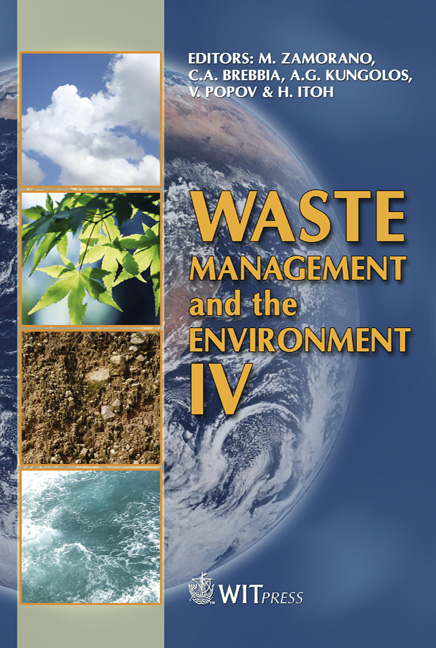Ultrasound Assisted Removal Of Estrogen Hormones
Price
Free (open access)
Transaction
Volume
109
Pages
7
Page Range
13 - 19
Published
2008
Size
291 kb
Paper DOI
10.2495/WM080021
Copyright
WIT Press
Author(s)
R. P. Suri, G. Andaluri, S. Abburi & M. Velicu
Abstract
Estrogen compounds are being detected in significant concentrations in surface water, wastewater, soil, sediments and groundwater. These estrogenic compounds influence the growth and performance of the reproductive system. Several reports indicate that the major source of these contaminants to the ecosystem is the effluents from wastewater treatment plants. These contaminants are found at significant concentrations in the effluent and the water bodies into which they are discharged. Reports also indicate that these estrogens are found in trace level concentrations in drinking water. Conventional treatment technologies are not designed to completely remove these pharmaceutically active chemicals (PhACs). Therefore there is a need to develop new treatment technologies in addition to the existing technologies. Ultrasound is an advanced oxidation process that effectively destroys many toxic organic chemicals. Ultrasound involves the process of passing high frequency sound waves into the liquid media. These sound waves create acoustic cavitations in the liquid media. The removal of these chemicals occurs through three different mechanisms, which are thermal degradation in the cavitation region, supercritical oxidation and hydroxyl radical oxidation in the interfacial or the bulk region. In the current work, ultrasound technology is employed as a mechanism of removal of several estrogen hormones. The estrogens targeted in this study were 17α-estradiol, 17β- estradiol, estrone, estriol, 17α-dihydroequilin, 17α-ethinyl-estradiol and equilin. Also included in the results are the effect of various process conditions such as variation of pH and presence of oxidizing agents on the removal of estrogens. The degradation rates for each of the estrogen compound have been investigated in clean water. The effect of ionic strength of the system and the system alkalinity are also presented. Keywords: estrogen hormones, ultrasound, pH, alkalinity, salt, peroxide.
Keywords
estrogen hormones, ultrasound, pH, alkalinity, salt, peroxide.





